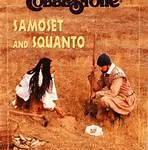On November 28, 2013, one of the biggest and most special holidays in the USA will be celebrated. This holiday is a very important part of our history. It is celebrated by all people of all faiths and races here who are proud to be Americans. It is not about religion or race even though we do thank God for all of our blessings on this day. It is more about families getting together on this one day to share a great feast and to be thankful for this very special time to be together. Of course, all of us know we should be grateful every day of the year, but with our busy lives, many American families are scattered all over the USA and do not get the opportunity to get together as often as we would like. Thus, Thanksgiving has become a highly emotional and sentimental time as well—one much loved by American families. 
In this first of a series of blogs about this very popular holiday, a brief history will be presented to remind all Americans of our history and to inform non-Americans about its origin. In the next blogs, some interesting trivia facts will be shared about this first celebration and its future historical facts. The last blog in the series will be a sharing of all of the many things for which I am so thankful in my own personal life today.
The first Thanksgiving dates back to the year 1620. The popular story is that the Plymouth Rock was the site of the original colony of the pilgrims. Contrary to this belief, however, Plymouth Rock was not the site of their original colony. The fact about the history of thanksgiving is that when the Pilgrims landed on the Plymouth Rock on December 11, 1620, in search of fresh provisions, they were greeted with hostility by the natives in the immediate vicinity and put back out to sea almost at once.
Then a little further south, the pilgrims came across Cape Cod, which was much more favorable anchorage as compared to the Plymouth Rock. The positive thing about Cape Cod was that here the native population was more cordial in nature. Weary from their voyage and in no mood to hunt down the site mandated by their charter, which was considerably further down the coast and somewhere within the limits of the original grant of the Virginia Company of Plymouth, the Pilgrims decided to establish their colony within this friendly territory. 

That year the initial harsh Massachusetts winters killed approximately one-half of the original 102 pilgrims in the new territory. Whereas in the following Spring that is in 1621, the Indians, under the guidance of two brave persons named Samoset of the Wampanoag Tribe and Squanto of the Patuxtet Tribe taught the survivors how to plant corn, called ‘maize’ by the natives, and how to catch alewives, a variety of the herring family, in order that the fish might be used as a fertilizer to growing pumpkins, beans and other crops. Samsoset and Squanto also instructed the Pilgrims in the arts of hunting and angling. That year by the summer season, despite poor crops of peas, wheat and barley, a good corn yield was expected and the pumpkin crop was bountiful.
In early autumn in order to recognize the help offered to the pilgrims by the Indians and to give thanks for having survived, the Governor William Bradford arranged for a harvest festival. Four men were sent ‘fowling’ after ducks and geese. Turkey may or may not have been a part of the forthcoming meal because the term ‘turkey’ was used by the Pilgrims to mean any type of wild fowl. 
This harvest festival lasted three days. Governor William Bradford invited Massasoit, the local sachem or chief of the Wampanoag to the festival. Massasoit attended the festival with ninety other Indians from the various Eastern Woodlands Tribes. They all participated in the ceremony. There is again little doubt that the majority of the feast was most likely furnished by the indigenous population and not by the pilgrims. It is certain that they provided venison.
The remainder of the meal, eaten outdoors around large tables, probably included the items such as fish, berries, boiled pumpkin, watercress, leeks, lobster, dried fruit, clams, wild plums and cornbread. The celebration of this first New England Thanksgiving is believed to have taken place sometime between September 21 and November 9.
Randi D. Ward
November 19, 2013




